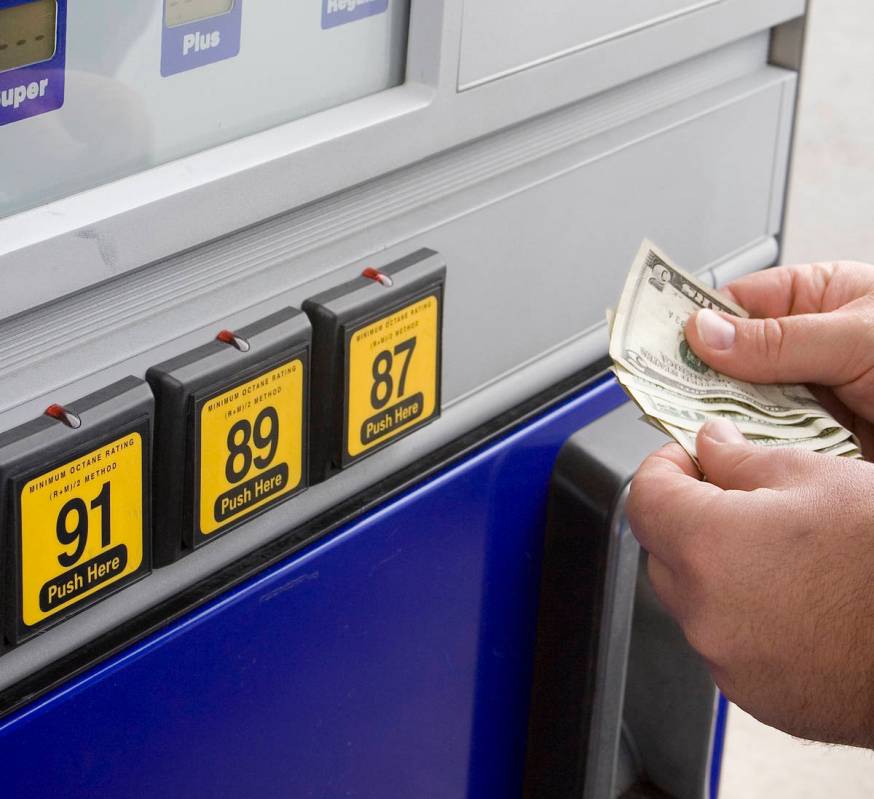
The cost of gasoline has been on the rise in recent months in Nevada and across the U.S.
The average cost of a gallon of regular gasoline surpassed the $3 mark for the first time since 2014 in May on the national level, according to data from the American Automobile Association. And on Monday, that average rose to $3.17 —a 13 cent increase since Memorial Day weekend.
“It’s a cruel summer at the gas pump with prices showing little signs of relief,” said Jeanette McGee, AAA spokesperson. “However, the more expensive prices aren’t stopping motorists from filling up, based on strong gasoline demand numbers.”
The Monday stats put the national average 98 cents per gallon higher than the same time a year earlier. The news is not all bad on that front, as the cost of a gallon of gas as of Monday was 41 cents cheaper than it was in July 2014. That’s also the last period when the national average rose past $3 a gallon, AAA states.
In Nevada, the average cost for a gallon of regular gasoline was at $3.89 on Tuesday, up 9 cents from a week prior. This cost was also up $1.24 a gallon over the same time a year earlier when the cost for a gallon of gas was at $2.65.
Nevada was saw the fourth highest increase in the country as of Monday, according to AAA data. The Silver State saw an eight-cent increase as of Monday, which increased by another cent on Tuesday.
Nevada trailed Ohio, which saw an increase of 11 cents as of Monday and Michigan, which saw an increase of 10 cents per gallon.
Nevada tied Kansas for an increase of 8 cents in the cost of a gallon of gas. The other states with the highest gain in the cost of gasoline include Idaho (plus 7 cents); Illinois (plus 6 cents); Wisconsin (plus 5 cents); Wyoming (plus 5 cents); and North Dakota (plus 5 cents).
High crude oil prices have been a primary reason for the increase in the cost of gasoline this summer, according to AAA. There is also good news there, as the high of $75 a barrel for crude oil fell to $71 a barrel last week.
“News from the Organization of the Petroleum Exporting Countries (OPEC) over the weekend, that they have reached a deal to increase production in August, could give crude oil prices the potential to drop under $70/bbl. Regardless, AAA expects higher pump prices to be the norm throughout the summer,” AAA said in a release.
According to its latest report by the Energy Information Administration, demand dipped to 9.28 million barrels a day in the U.S. Despite this, the rate is still strong for the summer, according to AAA.
“The EIA report also shows gasoline stocks increased by 1 million bbl to 236.5 million,” AAA states. “The jump in supply and drop in demand mitigated fluctuation to the national gas price average, which had a two-cent increase on the week.”
In a Monday report, AAA stated that over the previous seven days, 25 state averages had increased by at least 2 cents. And 11 of those states saw an increase of a nickel or more per gallon.
Market fluctuations
According to AAA, at the close of Friday’s formal trading session, the WTI increased by 16 cents to settle at $71.81.
AAA states, “Although prices fluctuated at the end of the day because of a stronger dollar, crude prices declined on the week due to supply concerns and tension between Saudi Arabia and the United Arab Emirates that prevented OPEC and its allies from reaching a deal to increase crude production. However, under the compromise, which media reports confirmed over the weekend, OPEC will increase daily crude production by 400,000 barrels in August. The increase is expected to help lower crude prices, assuming it is not met with higher demand. Crude prices could decline this week in anticipation of the production increase.”
For more about current gas prices or help with mapping a route via a mobile device, head to AAA.com/mobile